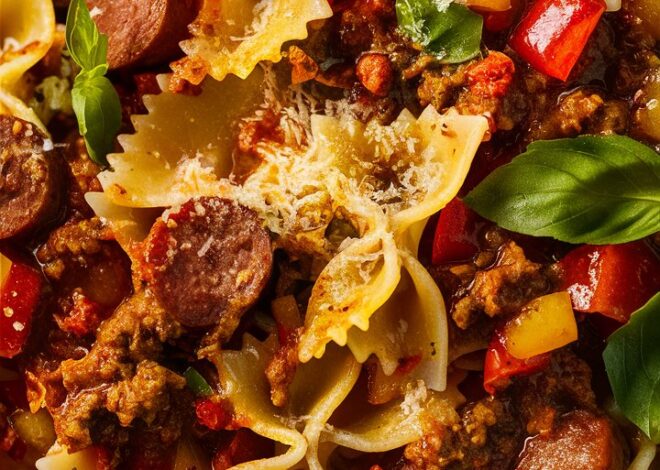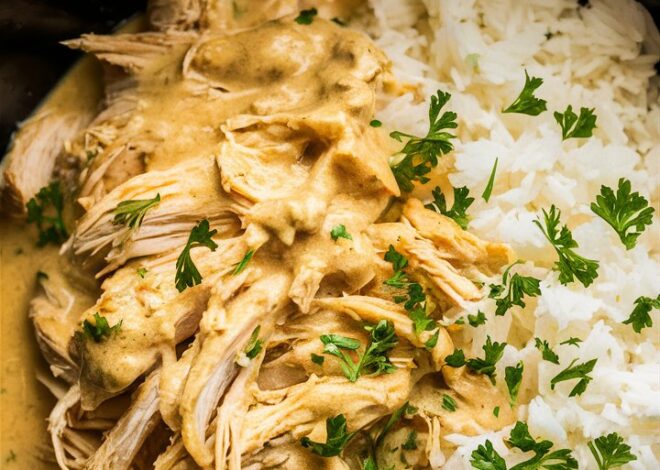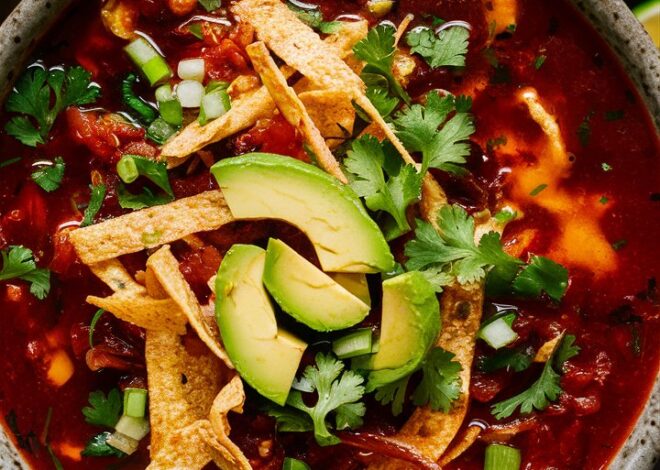
Make Classic Spaghetti Carbonara Like a Roman Chef 2025
Discover the secrets behind Italy’s most beloved pasta dish with our step-by-step guide to Classic Spaghetti Carbonara. Perfectly creamy, irresistibly savory, and surprisingly simple — this recipe brings gourmet Italian flavors to your dinner table.
Introduction
Spaghetti Carbonara is one of the most iconic pasta dishes to ever come out of Italy. With its silky sauce, salty, crispy cured pork, and the sharp tang of Pecorino Romano cheese, this dish combines simplicity and richness like no other. Despite its modest list of ingredients, Carbonara offers an unforgettable depth of flavor that has made it a global favorite.
Whether you’re a beginner or an experienced cook looking to perfect your technique, this guide will walk you through everything you need to know — from understanding authentic ingredients and mastering the sauce to troubleshooting common mistakes. By the end, you’ll be equipped to serve a plate of restaurant-quality Carbonara that impresses family, friends, and even yourself.
The History and Origins of Carbonara
Though deliciously timeless, Spaghetti Carbonara is a relatively modern addition to Italian cuisine, believed to have emerged in the mid-20th century. Its exact origins are debated, but most food historians agree the dish originated in Rome shortly after World War II.
One popular theory suggests that American soldiers stationed in Italy combined their rations of bacon and eggs with local pasta, inspiring the creation of Carbonara. Another viewpoint credits Italian coal miners (carbonari) for the dish’s name and rustic nature. Regardless of its roots, Carbonara quickly became a symbol of Italian ingenuity — transforming simple pantry staples into a luxurious meal.
Authenticity is crucial for true Carbonara: traditional recipes use guanciale (cured pork cheek), Pecorino Romano cheese, eggs, black pepper, and spaghetti. Notably, no cream is used in the original dish; the creamy texture is achieved solely through the careful emulsification of eggs, cheese, pasta water, and rendered pork fat.
Essential Ingredients: Quality Matters
Pasta: Spaghetti or Alternatives?
Classic Carbonara is traditionally made with spaghetti, prized for its ability to hold the silky sauce well. However, fettuccine, bucatini, or linguine are also excellent options if you prefer a different pasta shape.
Guanciale vs. Pancetta vs. Bacon
- Guanciale is the authentic choice — cured pork jowl with a tender, flavorful fat that crisps beautifully. It imparts a rich, slightly sweet flavor.
- Pancetta (cured pork belly) is a common substitute, readily available and similarly delicious but with a slightly milder taste.
- Bacon can be used in a pinch but has a smoky profile that changes the dish’s character.
Eggs: The Creamy Base
Use fresh, high-quality eggs. Most recipes call for a combination of whole eggs and yolks; the yolks provide richness and creaminess, while whole eggs help bind the sauce.
Cheese: Pecorino Romano
This sharp, salty sheep’s milk cheese is non-negotiable in authentic Carbonara. It melts smoothly and contributes an essential tang. Parmesan or Grana Padano can be used if Pecorino is unavailable but with a subtle difference in flavor.
Freshly Ground Black Pepper
Black pepper is used liberally in Carbonara, adding heat and complexity. Freshly cracked pepper is a must.
Step-by-Step Preparation Guide
1. Prepare the Pasta
Bring a large pot of salted water to a boil. Salted water is essential — it flavors the pasta from within. Add spaghetti and cook until al dente — tender yet firm to the bite. Drain the pasta, reserving about one cup of pasta water before draining.
2. Cook the Guanciale or Pancetta
In a large skillet over medium heat, add the diced guanciale or pancetta. Sauté until the fat renders out and the meat crisps lightly, about 5-7 minutes. Remove from heat. Do not discard the flavorful fat, as it will form the sauce’s base.
3. Prepare the Sauce
While the meat cooks, whisk together egg yolks, whole egg, and grated Pecorino Romano in a bowl. Add a generous amount of freshly ground black pepper. This mixture will be the silky sauce that coats the pasta.
4. Combine Pasta and Sauce
Add the drained hot pasta to the skillet with the guanciale fat (off the heat). Toss to coat the pasta thoroughly. Gradually pour in the egg and cheese mixture, tossing vigorously. The residual heat cooks the eggs gently, forming a creamy sauce without scrambling. Add reserved pasta water a little at a time until the desired sauce consistency is reached.
5. Serve Immediately
Plate the Carbonara and top with extra Pecorino and more cracked black pepper. Optionally, garnish with finely chopped parsley for color and freshness.
Tips for Perfection and Common Mistakes
- Avoid scrambled eggs: Ensure the skillet is off heat before adding the egg mixture. Toss continuously to use residual heat, not direct heat.
- Adjust sauce consistency: Use pasta water carefully to loosen the sauce. Too much water dilutes flavor, too little makes the sauce stiff.
- Use freshly grated cheese: Pre-grated cheese contains anti-caking agents that affect sauce texture.
- Don’t overcook pasta: Al dente texture is crucial to the dish’s success.
Variations and Dietary Adaptations
- Vegetarian Carbonara: Replace guanciale with sautéed mushrooms or smoked tempeh for a smoky flavor.
- Vegan Carbonara: Use silken tofu blended with nutritional yeast and kala namak (black salt) to mimic eggy flavor; vegan cheese can replace Pecorino.
- Gluten-Free: Use gluten-free spaghetti varieties. Ensure all other ingredients are certified gluten-free.
- Creamy Variations: Some add cream for a richer sauce, but traditionalists frown upon this.
Serving Suggestions and Pairings
Carbonara pairs beautifully with a crisp green salad, roasted vegetables, or a fresh bruschetta. A chilled glass of dry Italian white wine, like Pinot Grigio or Verdicchio, complements the dish perfectly.
Storage and Reheating
Carbonara is best enjoyed immediately. Leftovers can be refrigerated for up to 2 days and gently reheated with a splash of milk or water over low heat to restore creaminess. Freezing is not recommended due to texture loss.
Nutrition Overview (per serving)
- Calories: ~520 kcal
- Protein: 21g
- Carbohydrates: 55g
- Fat: 24g (Saturated Fat: 9g)
- Cholesterol: 175mg
- Sodium: 590mg
- Fiber: 2g
- Sugar: 2g
Frequently Asked Questions
Q: Can I use bacon instead of guanciale?
A: Yes, though bacon adds smokiness and changes the flavor profile slightly.
Q: Why do my eggs scramble?
A: Usually due to mixing egg mixture with pasta on direct heat or insufficient tossing.
Q: Can I prepare the sauce ahead of time?
A: The egg-cheese mix can be prepped in advance but bring it to room temperature before use.
Conclusion
Classic Spaghetti Carbonara is an elegant yet simple dish that celebrates Italian culinary brilliance. With minimal ingredients and straightforward technique, it offers maximum flavor and comfort. Armed with this guide, you’re ready to make authentic Carbonara that rivals any trattoria in Rome.
Embrace the art of perfect Carbonara, share it with loved ones, and enjoy a taste of Italy in your home kitchen.


